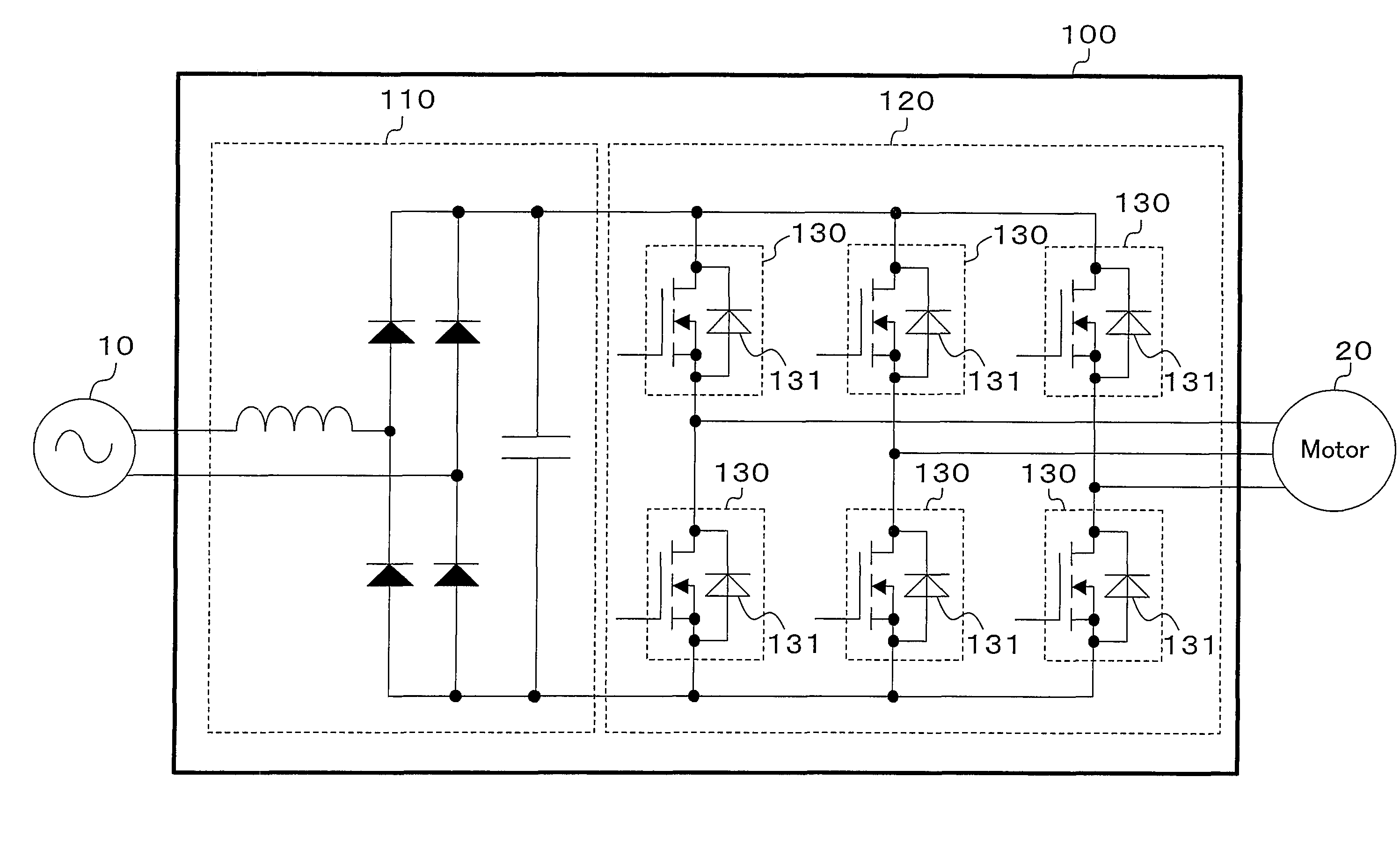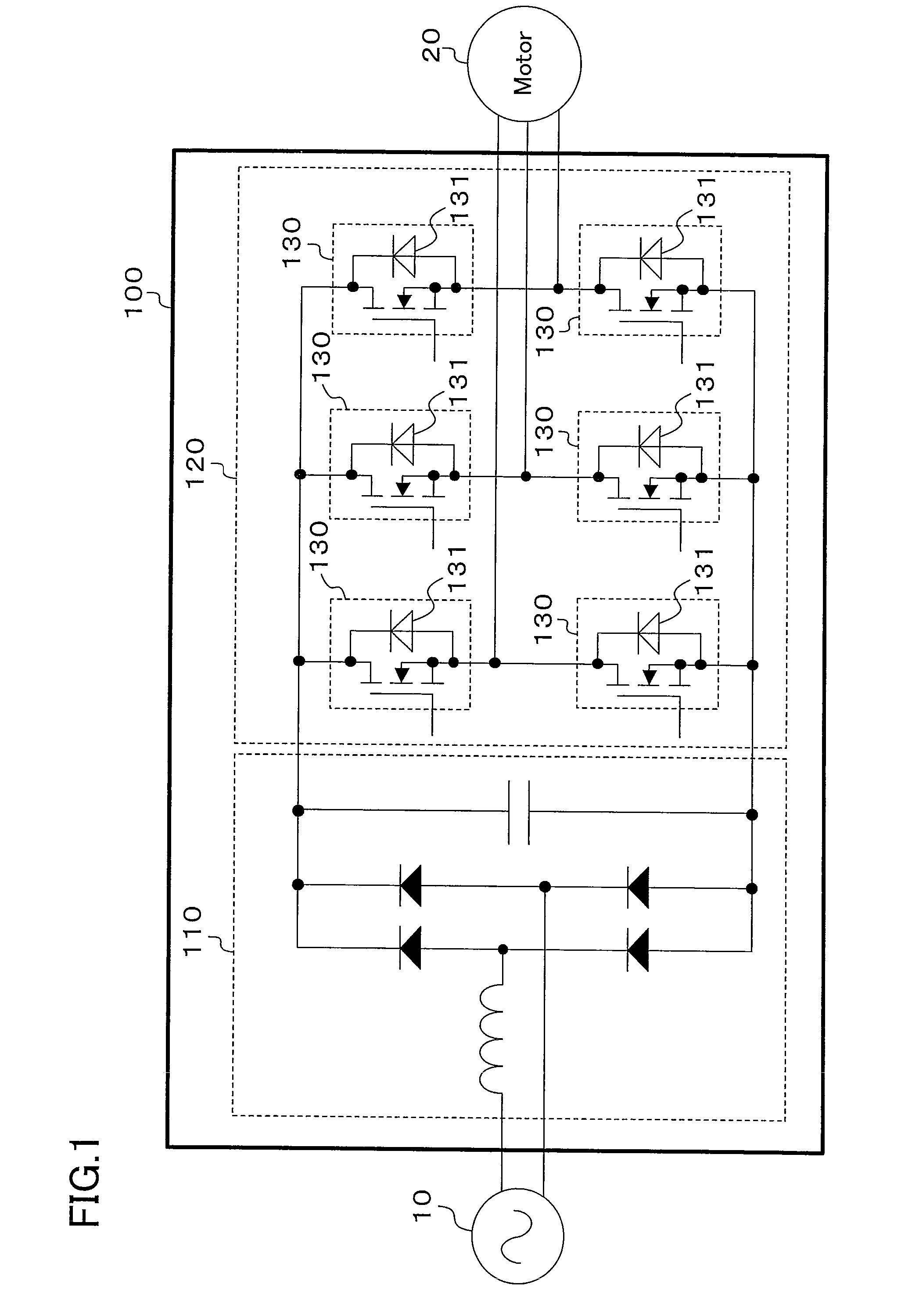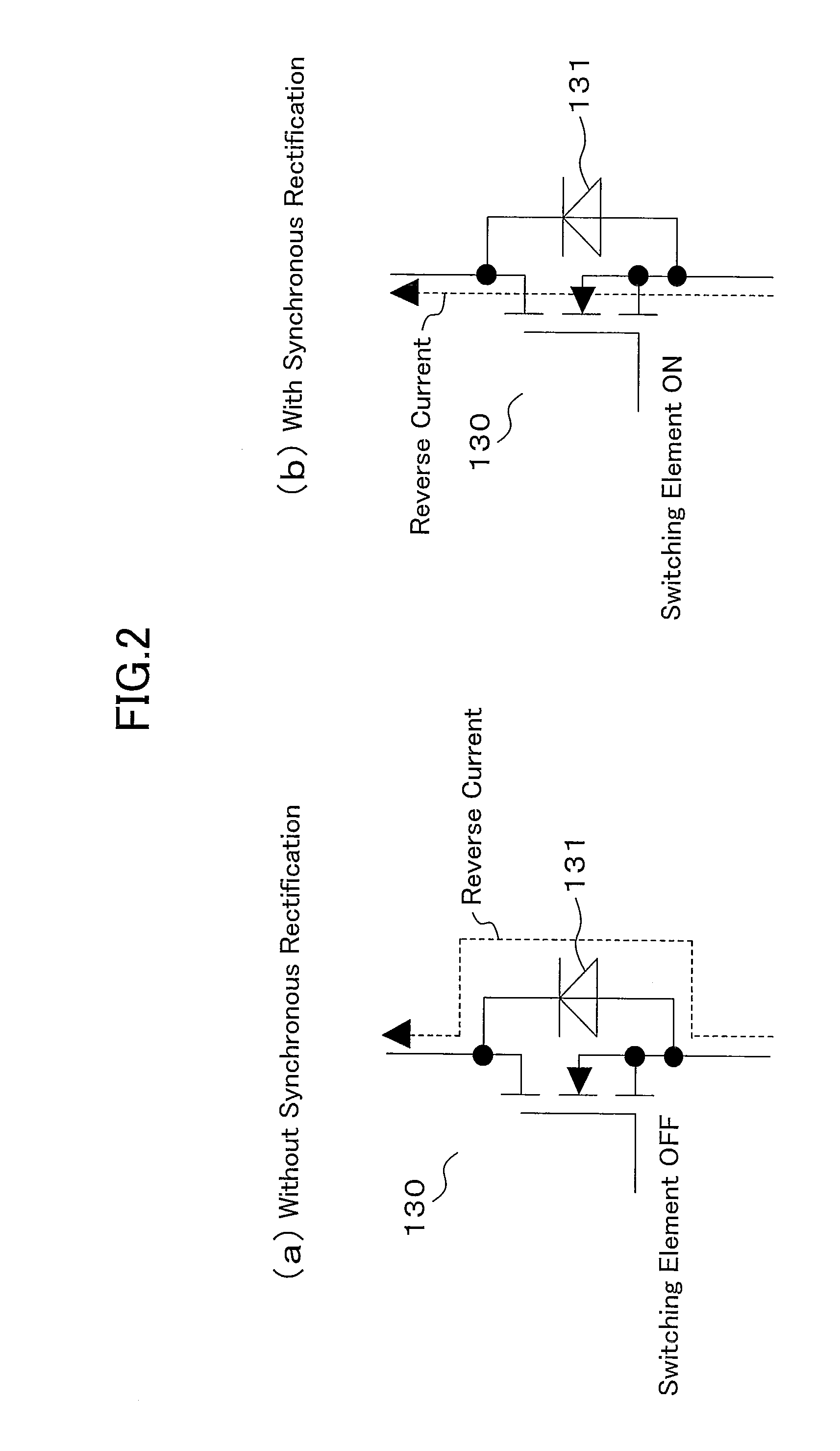Power converter
a power converter and converter technology, applied in the direction of transformers, efficient power electronics conversion, climate sustainability, etc., can solve the problems that the characteristics of switching elements made of silicon have almost reached their theoretical limits, and achieve the effects of reducing cost, reducing conduction loss, and increasing efficiency
- Summary
- Abstract
- Description
- Claims
- Application Information
AI Technical Summary
Benefits of technology
Problems solved by technology
Method used
Image
Examples
first embodiment
The First Embodiment
[0036]FIG. 1 shows a configuration of a power converter according to the first embodiment of the present invention. This power converter (100) rectifies alternating voltage of an a.c. power supply (10) using a converter circuit (110) and converts the direct current into a three-phase current by means of an inverter circuit (120) to supply the resultant current to a motor (20). This motor (20) is to drive a compressor that is provided for a refrigerant circuit in an air conditioner. Here, in FIG. 1 the a.c. power supply (10) is assumed to supply a single-phase current, but may supply a three-phase current.
[0037]The inverter circuit (120) is configured such that synchronous rectification is performed by six switching elements (130). The switching element (130) is comprised of a unipolar device (SiC MOSFET herein) using a wideband gap semiconductor. The inverter circuit (120) uses the body diode (131) of the SiC MOSFET (130) as a freewheeling diode when performing s...
second embodiment
The Second Embodiment
[0055]FIG. 5 shows a configuration of a power converter according to the second embodiment of the present invention. This power converter (500) performs synchronous rectification, using the body diode (131) of a SiC MOSFET (130) as the diode for a boosting chopper circuit (111) used as a power factor enhancement circuit. With this synchronous rectification, efficiency is improved, especially under light load conditions. Further, since a SiC device is used, the recovery current is made markedly low compared to that with a Si device so that it is possible to reduce switching loss.
third embodiment
The Third Embodiment
[0056]FIG. 6 shows a configuration of a power converter according to the third embodiment of the present invention. This power converter (600) performs synchronous rectification, using the body diodes (131) in SiC MOSFETs (130) as the rectifying diodes for a converter circuit (110). Though in FIG. 6, a commercial power supply (10) is assumed to be a single-phase alternating current, three-phase alternating current may be used. Further, only part of the rectifying diodes in the converter circuit (110) may use the body diode (131) of the SiC MOSFET (130) while the others may use usual diodes.
PUM
 Login to View More
Login to View More Abstract
Description
Claims
Application Information
 Login to View More
Login to View More - R&D
- Intellectual Property
- Life Sciences
- Materials
- Tech Scout
- Unparalleled Data Quality
- Higher Quality Content
- 60% Fewer Hallucinations
Browse by: Latest US Patents, China's latest patents, Technical Efficacy Thesaurus, Application Domain, Technology Topic, Popular Technical Reports.
© 2025 PatSnap. All rights reserved.Legal|Privacy policy|Modern Slavery Act Transparency Statement|Sitemap|About US| Contact US: help@patsnap.com



